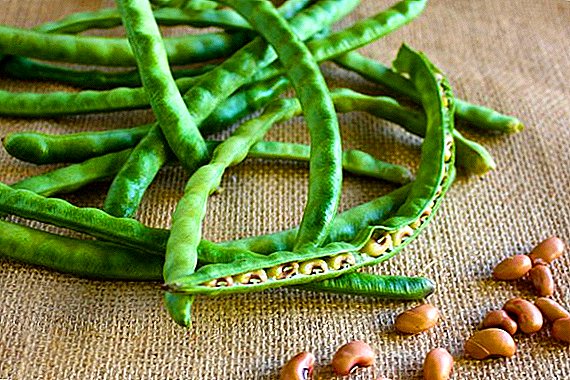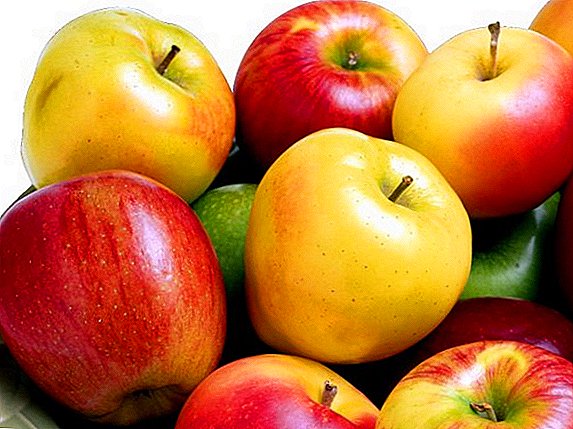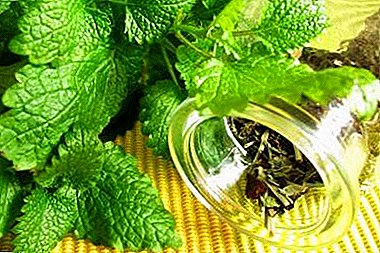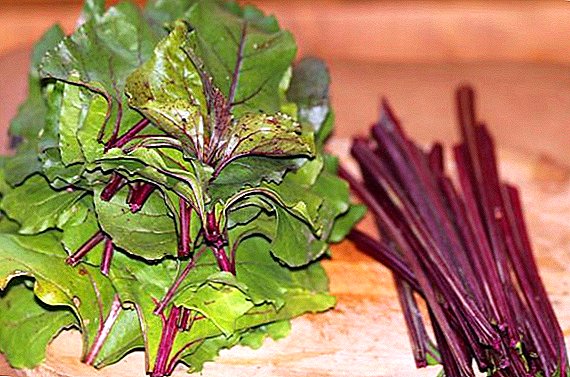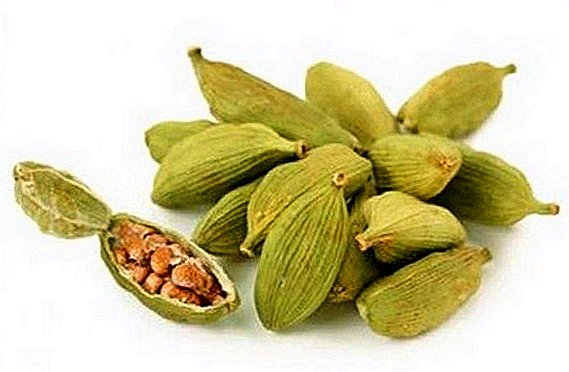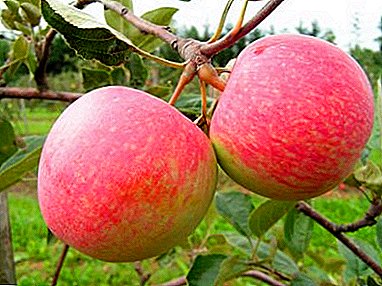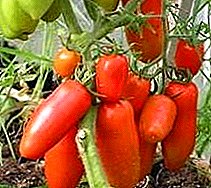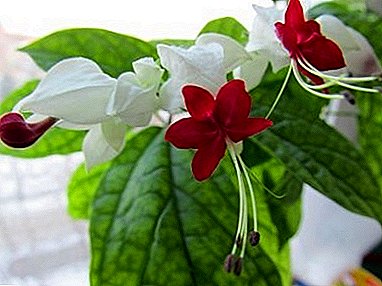
This amazing plant people call the "tree of fate" or "pure love." If thrompson clerodendrum settles in your house - a deciduous plant of the Verbenov family offers good times.
In this article we will talk in detail about how to grow clerodendrum in room conditions and how to care for him so that he always pleases with his lush flowering.
Description
 Clerodendrum Thompson Flower - Fast-Growing evergreen liana.
Clerodendrum Thompson Flower - Fast-Growing evergreen liana.
- Appearance: deciduous.
- Family: Verbenaceae.
- Latin name: Clerodendrum thomsoniae.
- Natural region: South Africa.
Flower stems are very flexible, slightly curly. The height can reach 4 meters or more. In adult specimens, the stems are most often lignified.
The leaves of this representative flora with short petioles, opposite, emerald hue. Streaks expressed vividly.
Due to their location, the leaf surface has quilted shape. The edges of the leaves are smooth. Sheet plate rounded with a small elongated edge. In length reaches no more than 10-13 cm.
The buds are in the middle of the sinuses of flowers. They are located on the elongated peduncles of the stems. Inflorescences in the form of brushes. Each piece has 6-22 miniature flowers. Flowers with five leaves.
Bract in the form of a flashlight, with a diameter of not more than 3 mm. Inside there is a halo shaped like a butterfly. From it protrude elongated stamens long little more than 2.5-3.5 cm.
Dying off of the corolla occurs quickly enough. And white bracts are on the Clerodendrum Thompson 45-60 days. After ottsvetaniya appear rounded fruits are orange tinged. In length, they reach about 1 cm. In each of these fruits, one seed is formed.
Today, clerodendrum has more than 450 species.
On our site you can find some of them:
- Clerodendrum Wallich;
- Clerodendrum Ugandan;
- Klerodendrum Filippinsky.
 Decorative leafy plants, which include and klerodendrum, attract the attention of most gardeners. We have prepared for you a series of useful materials about such colors.
Decorative leafy plants, which include and klerodendrum, attract the attention of most gardeners. We have prepared for you a series of useful materials about such colors.Read all about Sinoinum, Pellionia, Dhorizandru, Duchenei Tutti Frutti, Scinapsus, Thunbergia, Eschananthus, Rafidophora and other representatives of lianas.
A photo
You can visually get acquainted with Clerodendrum Thompson in the photo:





Home care
Despite its exotic origin and unusual appearance Clerodendrum Thomson does not require special care at home.
This plant is hardy and resistant to negative factors. To grow and flower bloom requires conditions as close as possible to natural, which means he needs:
- bright sunlight (we place the plant on the windowsill on the south or southeast side);
- air temperature in the summer - 20-25 degrees, in the winter - 10-15;
- high humidity (supported by spraying);
- do not leave the plant near the heating devices in the winter.
The klerodendrom requires annual transplantation and regular watering. Sand must be present in the land.
Attention: The forced rest period of Clerodendrum Thompson from October to March.
From mid-spring, the plant requires additional fertilizing with special complex fertilizers.
Read more about the care of Clerodendrum here.
 Clerodendrum, although it belongs to the ornamental deciduous plants can boast of beautiful flowers.
Clerodendrum, although it belongs to the ornamental deciduous plants can boast of beautiful flowers.If you want to replenish your collection with decorative flowering, take a look at our articles on Azalea, Akalifa, Acacia, Anthurium, Balsamine, Begonia, Verbena, Gardenia, Gerbera, Hibiscus, Wisteria, Gloxinia, Hydrangea and Clevia.
Pruning
 Adult clerodendrum need to regularly pruning the stems. This will help not only to maintain the beautiful shape of the plant, but also contribute to abundant flowering.
Adult clerodendrum need to regularly pruning the stems. This will help not only to maintain the beautiful shape of the plant, but also contribute to abundant flowering.
The most preferable time for this procedure is spring, the period before the start of full growth. Stems form one third.
Young plants can not be formed. Occasionally they cut off the edges of the stalks. This procedure increases branching.
Using pruning, you can get a decorative stem tree or an amazing branchy bush.
Watering
When watering this plant should not allow excessive flooding of the soil. In this case, the root system may rot. Before a new watering should wait for a little drying tops of the earth.
However, the plant does not tolerate drought especially during the period of active growth. In winter, watering is reduced to a minimum. Water must be taken separated, soft, without any chemical impurities.
Important! This representative flora needed frequent spraying. But if the vine has partially or completely dropped its leaves during the rest period, the spraying should be stopped.
Landing
Clerodendrum prefers nutritious subacid soils. Best of all, the plant grows at 4.9-6.6 pH. For planting use purchased soil for home flowers. You can take the soil for roses and mix it with the ground for violets or azaleas.
If the substrate is to be made independently, sod and mineral sheet earth is necessary. It adds a small amount of humus, peat and fine-grained sea sand. In the bottom of the pot must be small drainage holes.
Pebbles, shells or small sea stones are poured at the bottom. Cover drainage with a thin layer of earth. In the center set the plant. They cover with soil and water it plentifully.
Transfer

Plant transplantation can be carried out in early spring, before it begins to grow actively. A new pot should be deeper and larger than the previous one in diameter.
Young copies are transplanted every year as the tank is filled with the root system. Adults - 1 time in 2-3 years. For the fortification of the soil and increase its nutritional value, you can replace the upper layer, well, do not forget about fertilizers.
In the autumn period, feeding is necessary to cut to a minimum. In winter, during the rest period, the klerodendrum is not fed.
Temperature
The most optimal temperature for flower growth in the summer is 19-24 ° C. In winter, he needs a room cooler (14-16 ° C).
At this time, he begins a period of rest and begins to dump leaves. If you do not comply with such wintering conditions - the plant will not bloom.
Important! You can not install the flower next to the batteries and other heating devices. Due to the dry air, the plant can become very sick.
Lighting
Flower loves bright natural light. Optimal illumination 2900-4000 lux. If the sun is too bright, the vine will be shaved with other plants. With a lack of light, the formation of buds can slow down, and the leaves may begin to turn yellow.
 Different plants require different growing conditions. You will be able to choose such of them that will suit the conditions of your house or apartment, if you familiarize yourself with our materials from the sections on decorative-deciduous, decorative-flowering, cacti, bulbous, palm trees and succulents.
Different plants require different growing conditions. You will be able to choose such of them that will suit the conditions of your house or apartment, if you familiarize yourself with our materials from the sections on decorative-deciduous, decorative-flowering, cacti, bulbous, palm trees and succulents.Breeding
Plant reproduction occurs by seed and grafting. Consider both of these methods.
Cuttings
For propagation by cutting, you can use the apical stems that remained after pruning. They should be at least 3-4 internodes. Rooting of the plant is very simple and fast. Root the plant can be in a container with water, and in a wet substrate.

How to propagate the clerodendrum cuttings:
- Plant remaining after pruning the stalk in a plastic cup with a substrate;
- Cover with a mini hothouse of cellophane or a bottle;
- Put in a well-lit place;
- Ventilate from time to time so that the fungus does not start.
After 30-60 days, new leaves should appear on the seedlings. After full rooting, the flower is transplanted into large containers.
Seeds
After flowering the plant produces small fruits on it. In each of them is one seed. Seeds are harvested and sown in prepared containers with fortified soil. Planting is covered with a mini-greenhouse from a glass jar or a transparent glass.
Periodically future seedlings airing. After 45-60 days, shoots should appear. After the leaves appear on them, they can be transplanted into large containers. If the planting is supplemented with additional artificial light, the sprouts will appear earlier - in 10-15 days.
Diseases and pests
The main cause of plant disease is improper care.. Wilting or falling leaves indicate a lack or excess of watering. Also, the cause may be too dry air or poor nutritional soil without minerals.
Why doesn't the Clerodendrum Thompson bloom? The answer is simple. The lack of flowering indicates improper wintering with too high temperatures. Also, the cause may be a lack of light, improper crown formation or infrequent feeding.
If the leaves show amber-brown strokes, then the klerodendrum should be removed from the direct sun to avoid further burns.
Poor care may appear. spider mite or whitefly. At the first symptoms of the leaves of the plant wipe with a cloth with soapy water. Then washed under running warm water.
Conclusion
 Clerodendrum Thompson propagates by seeds and stalks. It grows at a temperature of 19-24 ° C.
Clerodendrum Thompson propagates by seeds and stalks. It grows at a temperature of 19-24 ° C.
Prefers a soil rich in vitamins and trace elements. To form a crown requires systematic trimming.
His support required in the form of fishing line or lattice. Young plants require annual transplants.
The flowering of this representative flora is very long and abundant - twice a year.


